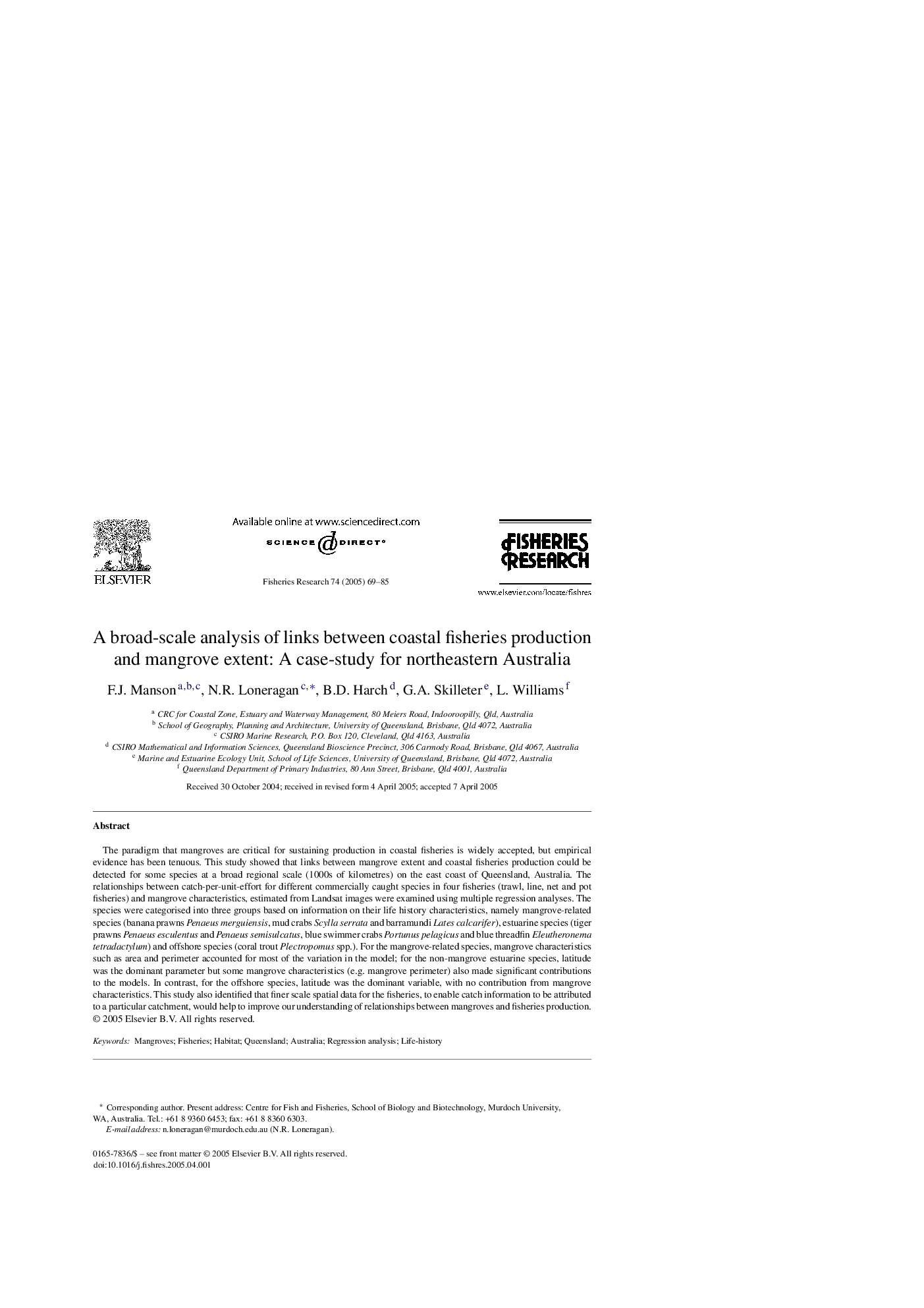| Article ID | Journal | Published Year | Pages | File Type |
|---|---|---|---|---|
| 9481658 | Fisheries Research | 2005 | 17 Pages |
Abstract
The paradigm that mangroves are critical for sustaining production in coastal fisheries is widely accepted, but empirical evidence has been tenuous. This study showed that links between mangrove extent and coastal fisheries production could be detected for some species at a broad regional scale (1000s of kilometres) on the east coast of Queensland, Australia. The relationships between catch-per-unit-effort for different commercially caught species in four fisheries (trawl, line, net and pot fisheries) and mangrove characteristics, estimated from Landsat images were examined using multiple regression analyses. The species were categorised into three groups based on information on their life history characteristics, namely mangrove-related species (banana prawns Penaeus merguiensis, mud crabs Scylla serrata and barramundi Lates calcarifer), estuarine species (tiger prawns Penaeus esculentus and Penaeus semisulcatus, blue swimmer crabs Portunus pelagicus and blue threadfin Eleutheronema tetradactylum) and offshore species (coral trout Plectropomus spp.). For the mangrove-related species, mangrove characteristics such as area and perimeter accounted for most of the variation in the model; for the non-mangrove estuarine species, latitude was the dominant parameter but some mangrove characteristics (e.g. mangrove perimeter) also made significant contributions to the models. In contrast, for the offshore species, latitude was the dominant variable, with no contribution from mangrove characteristics. This study also identified that finer scale spatial data for the fisheries, to enable catch information to be attributed to a particular catchment, would help to improve our understanding of relationships between mangroves and fisheries production.
Related Topics
Life Sciences
Agricultural and Biological Sciences
Aquatic Science
Authors
F.J. Manson, N.R. Loneragan, B.D. Harch, G.A. Skilleter, L. Williams,
